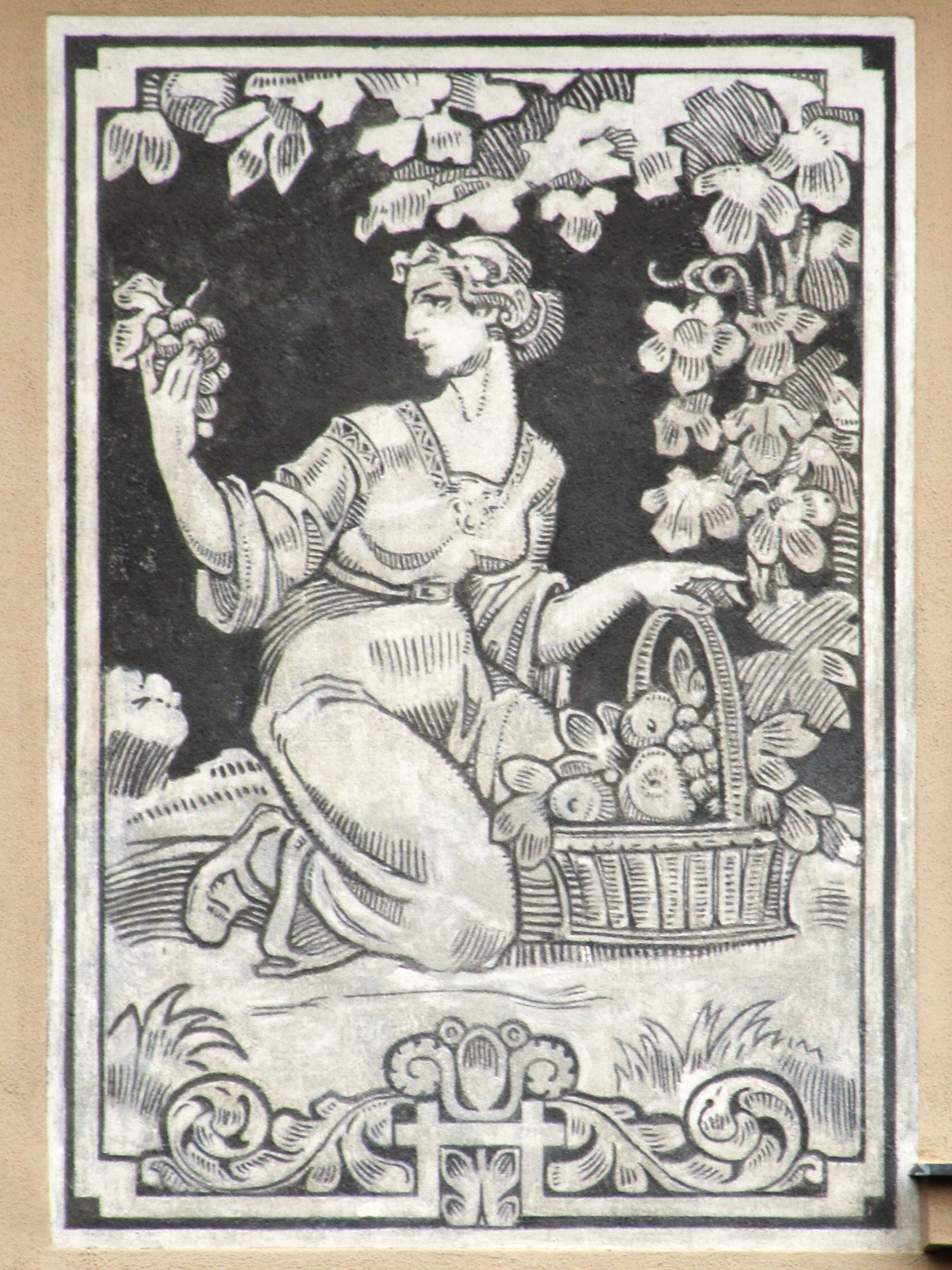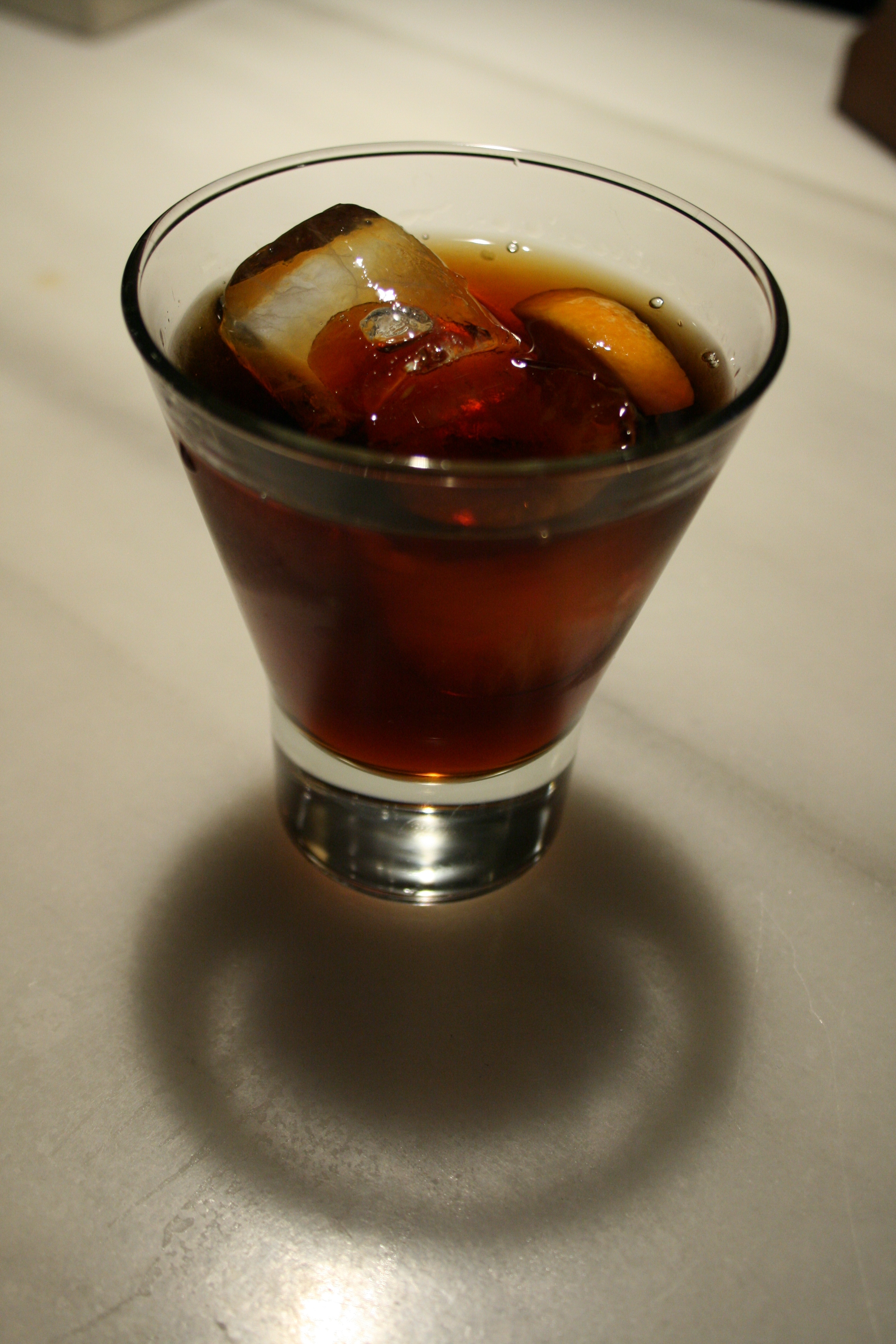|
҆tramberk
҆tramberk (; ) is a town in Nov√Ĺ Jińć√≠n District in the Moravian-Silesian Region of the Czech Republic. It has about 3,500 inhabitants. It is known for the production of ҆tramberk ears. The historic centre of ҆tramberk is well preserved and is protected as an Cultural monument (Czech Republic)#Monument reservations, urban monument reservation. Geography ҆tramberk is located about east of Nov√Ĺ Jińć√≠n and southwest of Ostrava. It lies in the Moravian-Silesian Foothills. The town is spread on the steep slopes of several hills. The highest point is the hill B√≠l√° hora at above sea level. The town is surrounded by several small-scale protected areas, including the ҆ipka Cave National Nature Monument. This karst cave is the oldest recorded human presence in the territory of the Czech Republic. History The first written mention of ҆tramberk is from 1211, when a village under the eponymous castle was documented. The origin and age of the castle are unknown. In 1359, the t ... [...More Info...] [...Related Items...] OR: [Wikipedia] [Google] [Baidu] |
҆tramberk Ears
҆tramberk ears () is a Czech confectionery product made of cone-shaped gingerbread dough traditionally baked in the ҆tramberk and the surrounding area of Moravia. Protected designation of origin This product could be officially made and sold only at the town area since 2000. In 2006, there were six certified producers. In 2007 this sweet became a Geographical indications and traditional specialities in the European Union, protected designation of origin in EU as first in the Czech Republic. The product is made in ҆tramberk for 800 years. Legend of the origin According to local legend, in the 13th century, during the Tatar invasion, the inhabitants from the whole area found refuge on Kotouńć Mountain, where the Tatars attacked them several times. During the last attack, a storm broke out and flooded the pond above the Tatars' lair, which the local inhabitants took advantage of by digging a dam in the pond and thus flushing out the Tatars. References {{reflist External linksH ... [...More Info...] [...Related Items...] OR: [Wikipedia] [Google] [Baidu] |
Moravian-Silesian Region
The Moravian-Silesian Region () is one of the 14 administrative regions of the Czech Republic. Before May 2001, it was called the Ostrava Region (). The region is located in the north-eastern part of its historical region of Moravia and in most of the Czech Silesia, Czech part of the historical region of Silesia. The region borders the Olomouc Region to the west and the Zl√≠n Region to the south. It also borders two other countries ‚Äď Poland (Opole Voivodeship, Opole and Silesian Voivodeships) to the north and Slovakia (ŇĹilina Region) to the east. It is a highly Industrialisation, industrialized region, its capital Ostrava was actually called the "Steel Heart of the Republic". In addition, it has several mountainous areas where the landscape is relatively preserved. Nowadays, the economy of the region benefits from its location in the Czech/Polish/Slovak borderlands. Administrative division Traditionally, the region has been divided into six districts () which still exist a ... [...More Info...] [...Related Items...] OR: [Wikipedia] [Google] [Baidu] |
Nov√Ĺ Jińć√≠n District
Nov√Ĺ Jińć√≠n District () is a district in the Moravian-Silesian Region of the Czech Republic. Its capital is the town of Nov√Ĺ Jińć√≠n. Administrative division Nov√Ĺ Jińć√≠n District is divided into five administrative districts of municipalities with extended competence: Nov√Ĺ Jińć√≠n, B√≠lovec, FrenŇ°t√°t pod RadhoŇ°tńõm, KopŇôivnice and Odry. List of municipalities Towns are marked in bold and market towns in ''italics'': Albrechtińćky - BartoŇ°ovice - Bernartice nad Odrou - B√≠lov - B√≠lovec - B√≠tov - Bordovice - Bravantice - FrenŇ°t√°t pod RadhoŇ°tńõm - Fulnek - HeŇômanice u Oder - HeŇôm√°nky - Hladk√© ŇĹivotice - Hodslavice - HostaŇ°ovice - Jakubńćovice nad Odrou - Jesen√≠k nad Odrou - Jistebn√≠k - KateŇôinice - KopŇôivnice - Kujavy - Kun√≠n - LibhoŇ°Ň• - Lichnov - LubomńõŇô - Mankovice - MoŇôkov - MoŇ°nov - Nov√Ĺ Jińć√≠n - Odry - PetŇôvald - PŇô√≠bor - Pustńõjov - Ryb√≠ - Sedlnice - ҆enov u Nov√©ho Jińć√≠na - Skotnice - Slatina - '' Sp ... [...More Info...] [...Related Items...] OR: [Wikipedia] [Google] [Baidu] |
҆ipka
҆ipka is a cave located near ҆tramberk, Moravian-Silesian Region, Czech Republic, 440 m above sea level. In 1880, a human mandible, mandible of a Neanderthal child was found there. The age of the child has been estimated to be between 9 and 10 years.JiŇô√≠ Svoboda, Vojen LoŇĺek, Emanuel Vlńćek, "Hunters between East and West: the Paleolithic of Moravia", 1996, , pp.52-5(Google books)/ref> The archeological work in ҆ipka was conducted from 1879 to 1893 by Karel Jaroslav MaŇ°ka. The cave was probably alternatively inhabited by Neandertals and cave bears. The site also yielded Mousterian tools and traces of hearths. This was the first discovery of Neanderthal remains in their cultural context. References External links * Archeolog.cz: Description, site map, photo gallery and literature (in Czech language, Czech). {{DEFAULTSORT:Sipka 1879 archaeological discoveries Caves of the Czech Republic Prehistoric sites in the Czech Republic Neanderthal sites Moravian Wallachi ... [...More Info...] [...Related Items...] OR: [Wikipedia] [Google] [Baidu] |
Studénka
Stud√©nka (; ) is a town in Nov√Ĺ Jińć√≠n District in the Moravian-Silesian Region of the Czech Republic. It has about 9,300 inhabitants. The town is situated on both sides of the historical border between Moravia and Czech Silesia. Administrative division Stud√©nka consists of three municipal parts (in brackets population according to the 2021 census): *Stud√©nka (2,942) *Butovice (5,837) *Nov√° Horka (202) Geography Stud√©nka is located about northeast of Nov√Ĺ Jińć√≠n and southwest of Ostrava. It is situated on both sides of the historical border between Moravia and Czech Silesia; Butovice and Nov√° Horka lies in Moravia and the town proper in Czech Silesia. Stud√©nka lies in a flat landscape in the Moravian Gate. It is situated on the left bank of the Oder River. Two systems of fishponds are located in the municipal territory. The southeastern part of the territory, which is a strip along the Oder, belongs to the PoodŇô√≠ Protected Landscape Area. History The first writte ... [...More Info...] [...Related Items...] OR: [Wikipedia] [Google] [Baidu] |
Martin Stephan
Martin Stephan (1777‚Äď1846) was pastor of St. John Lutheran Church in Dresden, Germany during the early 19th century. He organized the Saxon emigration to the United States in the early 19th century. Biography Martin Stephan was born August 13, 1777, in Stramberg, Moravia, presently the Czech Republic, of Czech parents. Martin attended St. Elizabeth's Gymnasium in Breslau, sponsored by local pietist and pastor Johann Ephraim Scheibel, rector of the gymnasium and father of Johann Gottfried Scheibel, a professor at the University of Breslau. He then attended the University of Halle and the University of Leipzig from 1804 to 1809.Forester, 28. Stephan became pastor in Haber, Bohemia, in 1809. In 1810, Martin became the pastor of St. John's in Dresden, a specially chartered church that had its origins in those who had fled from Moravia and Bohemia in 1650. Stephan preached in Czech and German. For the next 30 years, Martin was known for his teaching, preaching, and compassio ... [...More Info...] [...Related Items...] OR: [Wikipedia] [Google] [Baidu] |
Jano Köhler
Jano K√∂hler (sometimes spelled Jano Koehler; 9 February 1873 ‚Äď 20 January 1941) was a Czechs, Czech painter. He is known for decorating sacral buildings with frescoes and sgraffito, sgraffiti. Life and education K√∂hler was born in a Czech-German family, but his German father died soon after. He showed interest in fine arts and went to study in Prague. He graduated from Academy of Arts, Architecture and Design in Prague, Academy of Arts, Architecture and Design (1893‚Äď1897) and Academy of Fine Arts, Prague, Academy of Fine Arts (1897‚Äď1900). During his studies, he gained valuable experience in the field of monumental painting, especially in the field of frescoes and sgraffito, sgraffiti. He was student of Kamil Hilbert, Stanislav Sucharda, Felix Jenewein, Otakar Hostinsk√Ĺ, FrantiŇ°ek ŇĹen√≠Ň°ek and Maximilian Pirner. In 1899, he bought a house in Nenkovice where he set up a studio, and moved here in 1901. From 1926 until his death he lived in Str√°Ňĺovice. He died in a hos ... [...More Info...] [...Related Items...] OR: [Wikipedia] [Google] [Baidu] |
Moravian-Silesian Foothills
Moravian-Silesian Foothills () are foothills and a geomorphological mesoregion of the Czech Republic. Geomorphology The Moravian-Silesian Foothills is a mesoregion of the Western Beskidian Foothills macroregion within the Outer Western Carpathians subprovince. It is bordered by the Moravian-Silesian Beskids and Host√Ĺn-Vset√≠n Mountains on the south and by the Moravian Gate on the north. The landscape is characterized by a erosional-denudational relief based on a deeply denuded nappe structure with numerous nappe debris, remnants of leveled surfaces, breakthrough valleys and cryogenic forms resulting from continental glaciation. The foothills are further subdivided into the microregions of Kelńć Uplands, Malen√≠k, PŇô√≠bor Uplands, ҆tramberk Highlands, FrenŇ°t√°t Furrow, TŇôinec Furrow, and TńõŇ°√≠n Uplands. There are a lot of low mountains or high hills. The highest peaks of the Moravian-Silesian Foothills are: *Skalka, *Stanovec, *OndŇôejn√≠k, *Such√© √ļbońć√≠, *ńĆerv ... [...More Info...] [...Related Items...] OR: [Wikipedia] [Google] [Baidu] |
Geographical Indications And Traditional Specialities In The European Union
Three European Union schemes of geographical indications and Traditional food, traditional specialties, known as protected designation of origin (PDO), protected geographical indication (PGI), and traditional speciality guaranteed (TSG), promote and protect names of agricultural products and foodstuffs, wines and spirits. Products registered under one of the three schemes may be marked with the logo for that scheme to help identify those products. The schemes are based on the legal framework provided by the EU Regulation No 1151/2012 of the European Parliament and of the Council of 21 November 2012 on quality schemes for agricultural products and foodstuffs. This regulation applies within the EU as well as in Northern Ireland. Protection of the registered products is gradually expanded internationally via bilateral agreements between the EU and non-EU countries. It ensures that only products genuinely originating in that region are allowed to be identified as such in commerce. The ... [...More Info...] [...Related Items...] OR: [Wikipedia] [Google] [Baidu] |
Obec
(, ; plural ) is the Czech and Slovak word for a municipality (in the Czech Republic, in Slovakia and abroad). The literal meaning of the word is " commune" or " community". It is the smallest administrative unit that is governed by elected representatives. Cities and towns are also municipalities. Definition The legal definition (according to the Czech code of law with similar definition in the Slovak code of law) is: ''"The municipality is a basic territorial self-governing community of citizens; it forms a territorial unit, which is defined by the boundary of the municipality."'' Every municipality is composed of one or more cadastral areas. Every municipality is also composed of one or more municipal parts (), which are usually town quarters or villages. A municipality can have its own flag and coat of arms. Czech Republic Almost the entire area of the Czech Republic is divided into municipalities, with the only exception being military training areas. The smaller mu ... [...More Info...] [...Related Items...] OR: [Wikipedia] [Google] [Baidu] |
VeŇôovice
VeŇôovice () is a municipality and village in Nov√Ĺ Jińć√≠n District in the Moravian-Silesian Region of the Czech Republic. It has about 2,000 inhabitants. Etymology The German name ''Wernsdorf'' is derived from the ''lokator'' who founded the village named Werner. The Czech name is a transcription of the German name. Geography VeŇôovice is located about southeast of Nov√Ĺ Jińć√≠n and south of Ostrava. The northern part of the municipality lies in the Moravian-Silesian Foothills. The southern part lies in the Moravian-Silesian Beskids and within the Beskydy Protected Landscape Area. The highest point is the Velk√Ĺ Javorn√≠k mountain at above sea level, which lies on the southeastern municipal border. The Jińć√≠nka River flows through the municipality. History The first written mention of VeŇôovice is from 1411, however there is also an unverified mention from 1293. The village was probably founded in the second half of the 13th century, during the colonisation of the area. Dem ... [...More Info...] [...Related Items...] OR: [Wikipedia] [Google] [Baidu] |



